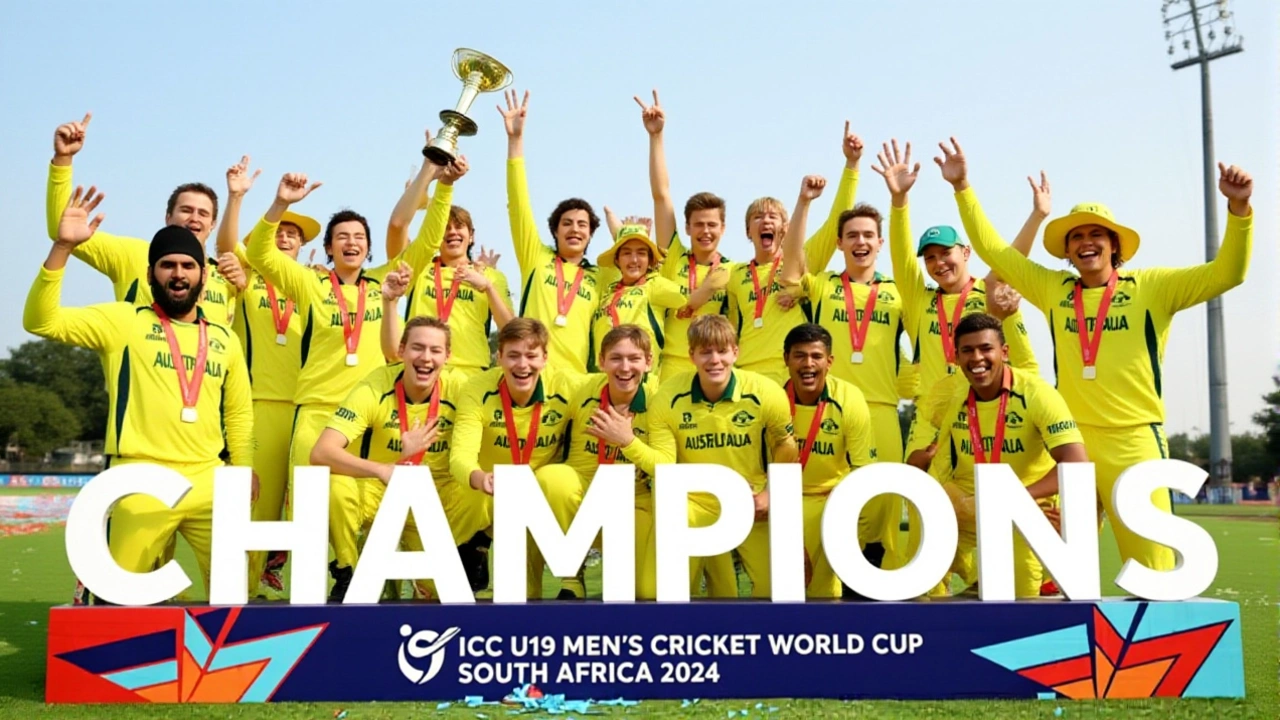The International Cricket Council has officially unveiled the schedule for the 2026 ICC Under-19 Men's Cricket World CupZimbabwe and Namibia, confirming the 16-team tournament will kick off on January 15, 2026, with the final set for February 6, 2026. In a historic move, the event will be co-hosted for the first time by two African nations — a bold step that signals the ICC’s growing commitment to expanding youth cricket beyond traditional strongholds. Tanzania will make its maiden appearance in the tournament, joining teams from across the globe in what promises to be the most geographically diverse U19 World Cup yet.
Opening Match, Bracket Structure, and Key Dates
The tournament’s opening fixture will pit traditional powerhouse India against debutants United States of America at an as-yet-unannounced venue in Zimbabwe or Namibia. The group stage — 24 matches spread across four groups (A, B, C, D) — runs from January 15 to January 24, with the top two teams from each group advancing to the knockout rounds. What’s unusual here is the bracket design: Group A and Group D teams will face off in one half of the knockout ladder, while Group B and Group C teams compete in the other. That means A1 will play D3, B1 will face C2, and C1 will take on B2 in what the ICC calls the "Super League" phase — a structure designed to reward group winners while keeping the competition tight.
Even the teams finishing 13th to 16th aren’t forgotten. A playoff between B4 and C4 is confirmed, ensuring every team plays at least five matches. This isn’t just about crowning a champion — it’s about development. Every game matters, and every player gets meaningful exposure. The points table will track Played, Wins, Losses, No Results, Points, and Net Run Rate — the same metrics used in senior cricket, giving young athletes a taste of professional standards.
Co-Hosting a First: Zimbabwe and Namibia Step Into the Spotlight
Zimbabwe, which last hosted the senior 2003 Cricket World Cup, is returning to the global stage in a big way. Namibia, meanwhile, has hosted multiple ICC World Cricket League events but never a U19 World Cup. Together, they’ll split the 41 matches — 24 in the group stage, 15 in the knockout rounds — across venues still being finalized by Zimbabwe Cricket and Cricket Namibia. Both boards are working closely with the ICC, headquartered in Dubai, to ensure broadcast readiness and fan accessibility.
"This is about legacy," said a senior Zimbabwe Cricket official, speaking off the record. "We’ve got kids in Harare and Bulawayo who’ve never seen a live international match. Now they’ll get to watch the future stars of the game — maybe even their future heroes. That’s priceless."
Tanzania’s Historic Debut and the Rising Tide of African Cricket
Tanzania’s inclusion isn’t just symbolic. It’s the result of years of grassroots investment by the Tanzania Cricket Association, supported by ICC development grants. Their qualification, secured through the Africa U19 qualifier in 2025, marks a turning point. For years, African representation in youth cricket has been dominated by South Africa, Namibia, and Zimbabwe. Now, Tanzania’s presence proves talent is bubbling up from unexpected corners — and the ICC is listening.
"We’ve got players who’ve never left the country before," said Tanzania’s U19 captain, 17-year-old Farouk Mwakasungula, in a recent interview. "Now we’re going to play India, Pakistan, Australia. It’s surreal. But we’re not here to make up the numbers. We’re here to compete."
Legacy and the Next Generation of Stars
History shows this tournament isn’t just a youth event — it’s a launchpad. Past participants include Virat Kohli, Kane Williamson, and Babar Azam. The 2026 edition could produce the next generation of captains and all-rounders. With the age eligibility cutoff set at August 31, 2025, players born on or after that date are eligible — meaning many will still be 17 or 18 during the tournament. That’s prime development age: physically maturing, mentally sharp, and hungry to prove themselves.
"The U19 World Cup is where careers are made," said former South African coach and ICC development consultant David Njoroge. "It’s not just about winning. It’s about how players handle pressure, adapt to different pitches, learn from losses. The teams that come out of this tournament with character? They’re the ones who’ll dominate Test cricket in five years."
What’s Next? Team Arrivals and Broadcast Details
All teams must arrive in Zimbabwe or Namibia by January 8, 2026. Warm-up matches from January 9 to 14 will serve as final tune-ups — and scouting opportunities for national selectors. The ICC has promised detailed venue maps and match timings soon, with broadcast windows tailored for global audiences in Asia, Europe, and the Americas. Expect live streaming via the ICC’s digital platforms and partnerships with regional broadcasters like Star Sports, Sky Sports, and SuperSport.
There’s still uncertainty — stadium names, exact cities, and broadcast partners haven’t been announced. But one thing’s clear: this tournament will be watched. Not just by cricket fans, but by families across Africa who’ve never seen their country represented on this stage.
Frequently Asked Questions
How does the bracket structure work in the 2026 U19 World Cup?
The tournament splits into two knockout pathways: Group A and Group D teams face each other in one half, while Group B and Group C teams compete in the other. The top team from Group A (A1) plays the third-place team from Group D (D3), and similarly, B1 faces C2. This design ensures early matchups between strong and mid-tier teams, creating more competitive knockout rounds and reducing the chance of early eliminations for group winners.
Why is Tanzania’s participation significant?
Tanzania’s debut marks the first time a team from East Africa has qualified for the U19 World Cup, breaking the dominance of Southern African nations. It reflects the ICC’s investment in grassroots development across the continent and proves talent exists beyond traditional cricketing hubs. Their presence also inspires young players in countries with limited infrastructure, showing that qualification is possible with consistent effort.
Which past players became stars after competing in the U19 World Cup?
The tournament has launched the careers of global icons including Virat Kohli (2006), Kane Williamson (2010), and Babar Azam (2014). Others like Steve Smith, Joe Root, and Eoin Morgan also competed at this level. These players didn’t just win matches — they learned how to handle pressure, adapt to unfamiliar conditions, and lead under scrutiny — skills that defined their senior careers.
How will the matches be broadcast globally?
The ICC will stream all matches live on its official website and app, with regional broadcasters like Star Sports (India), Sky Sports (UK), SuperSport (Africa), and Willow TV (North America) carrying live coverage. Match times will be adjusted for prime viewing windows in Asia, Europe, and North America, with replays available within hours. The ICC has pledged to ensure free-to-air access in host nations and developing cricket markets.
What’s the age eligibility rule for the 2026 tournament?
Players must be under 19 years of age as of August 31, 2025. That means a player born on September 1, 2006, is eligible, but someone born on August 31, 2006, is not. This strict cutoff ensures fairness and aligns with global youth sports standards. Many of the standout players will be 17 or 18 during the tournament — old enough to compete at a high level, young enough to still develop rapidly.
Why did the ICC choose Zimbabwe and Namibia as co-hosts?
The ICC is actively rotating the tournament to promote cricket in emerging markets. Zimbabwe has the infrastructure and experience from hosting the 2003 World Cup, while Namibia has proven its ability to organize ICC events through the World Cricket League. Co-hosting reduces logistical strain, promotes regional unity, and gives both nations a platform to showcase their cricketing growth — especially important as they rebuild their senior teams after years of instability.




